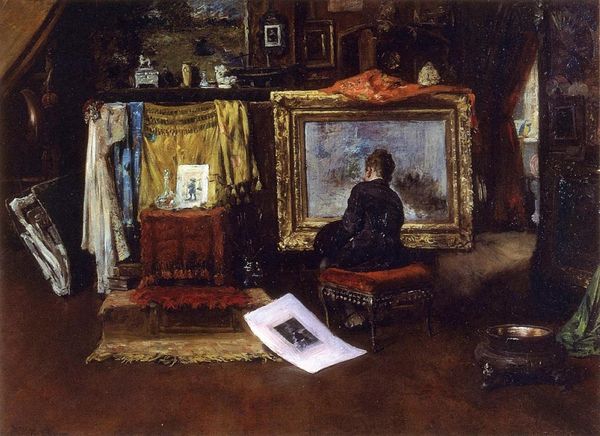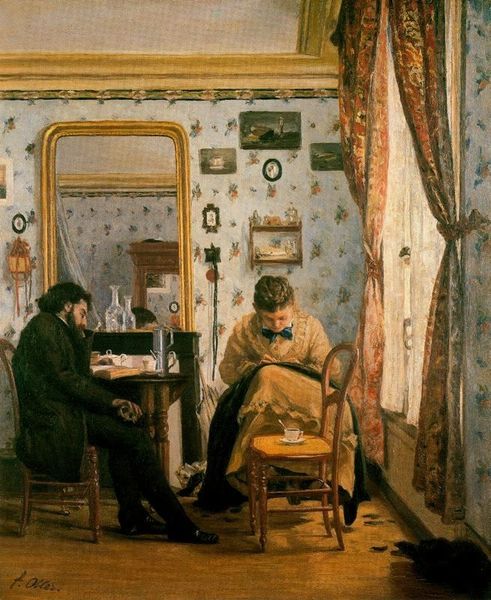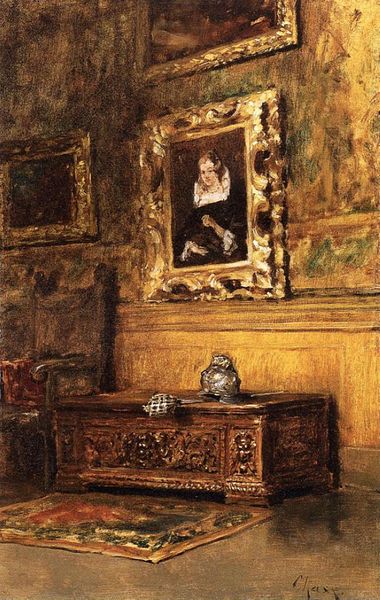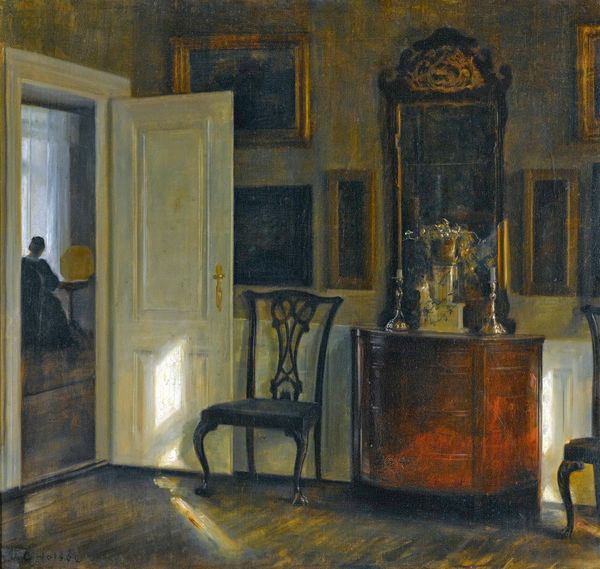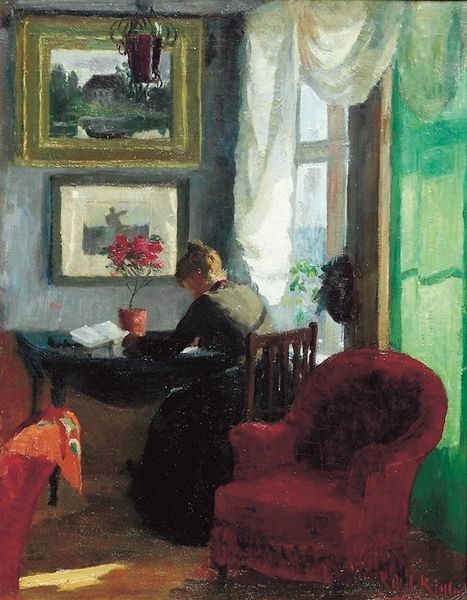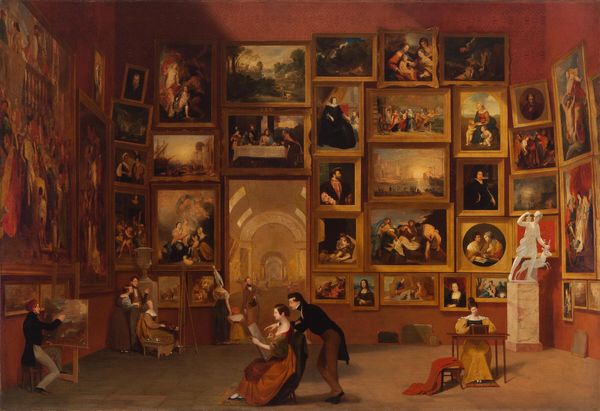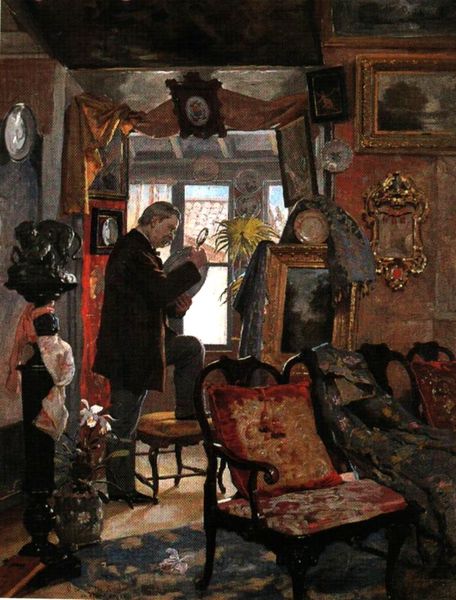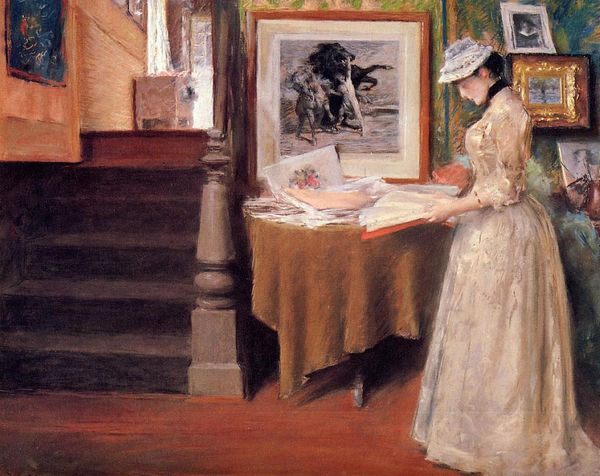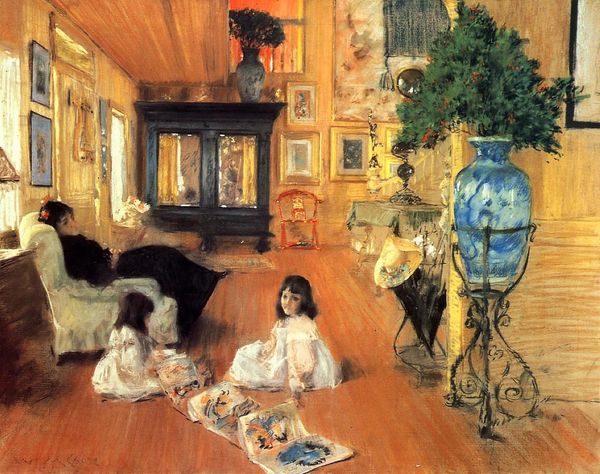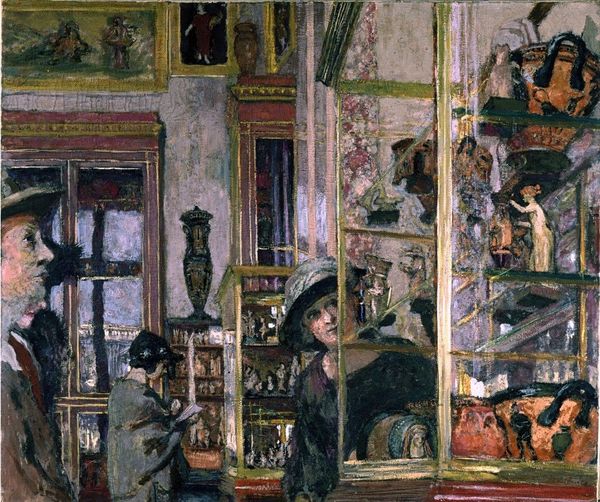
painting, oil-paint
#
portrait
#
painting
#
impressionism
#
oil-paint
#
studio composition
#
genre-painting
#
history-painting
Copyright: Public domain
Editor: We are looking at Frédéric Bazille’s *The Artist’s Studio, Rue de la Condamine*, painted in 1870. It strikes me as an almost documentary-like portrayal of an artistic community. What do you see in this piece, and what might Bazille be trying to say? Curator: It's a compelling question. What I see is a constructed image, a deliberate positioning of Bazille within a network of power, influence, and shared identity. Notice how Manet, a figure of immense importance at the time, is centrally located and seemingly presiding over the gathering. This isn't just a snapshot of a studio, but a statement about artistic lineage and solidarity amidst social upheaval, especially considering this was painted during the Franco-Prussian War. How do you think this representation aligns with broader discussions about artistic legitimacy? Editor: That's fascinating. I hadn’t considered it as a statement of artistic legitimacy. So the positioning of Manet isn’t accidental; it’s a purposeful act of claiming a particular place in the art world? Curator: Precisely. Bazille is carefully crafting a narrative. Who is included and, crucially, who is excluded, tells a story about who belongs and whose contributions are valued in shaping the direction of art. The presence of figures like Renoir and Zola, while absent in physical form, reminds us that the dynamics of art history extend beyond the canvas, into intellectual, philosophical, and political debates that transcend any singular representation of one man's studio. How can the reading of who’s ‘in’ and who's ‘out’ tell us about these power dynamics? Editor: It adds another layer of complexity to what initially seemed like a simple interior scene, pointing towards wider social and political meanings, as well as artistic intention. Thank you, it really broadens my understanding. Curator: And hopefully provides some food for thought about how representation and self-fashioning shape history itself!
Comments
artera almost 2 years ago
⋮
A talented early Impressionist, Jean-Frédéric Bazilles (1841-70) work is little known due to his untimely death-he was killed in the Franco-Prussian War, at the age twenty-nine. His works exhibit a distinct, but often varied style, as Bazille sought to create his own artistic identity. His paintings show a freshness, great attention to detail, understanding of anatomy, and realistic facial expression. Had he lived for longer, it is likely his name would be as well known today as that of Monet and Renoir. Born in Montpellier, Bazille moved to Paris as a young man, where he studied at the studio of Swiss painter Charles Gleyre. His fellow pupils included Auguste Renoir, Claude Monet, and Alfred Sisley. Gleyre was an exponent of plein-air painting and Bazille embraced this concept of painting in the open, rather than a studio. Bazille was from a wealthy family and was studying to become a doctor. He gave a great deal of financial assistance to Monet. During the 1860s, he gave up his medical studies in favor of art. He shared studios with Monet and Renoir, and he exhibited at the Paris Salon from 1866 onward. Among his finest paintings are the sexually charged Toilette (1869-70), After the Bath (1870), and The Improvised Field Hospital (1865), actually a portrait of Monet recovering from a leg injury. Bazille's later works were strongly influenced by Édouard Manet. The Artist's Studio depicts Bazilles own studio. Among the figures in this scene are Manet, Monet, Renoir, and the writer Émile Zola. The tallest figure is Bazille himself, added in by Manet after Bazille's death.
Join the conversation
Join millions of artists and users on Artera today and experience the ultimate creative platform.
